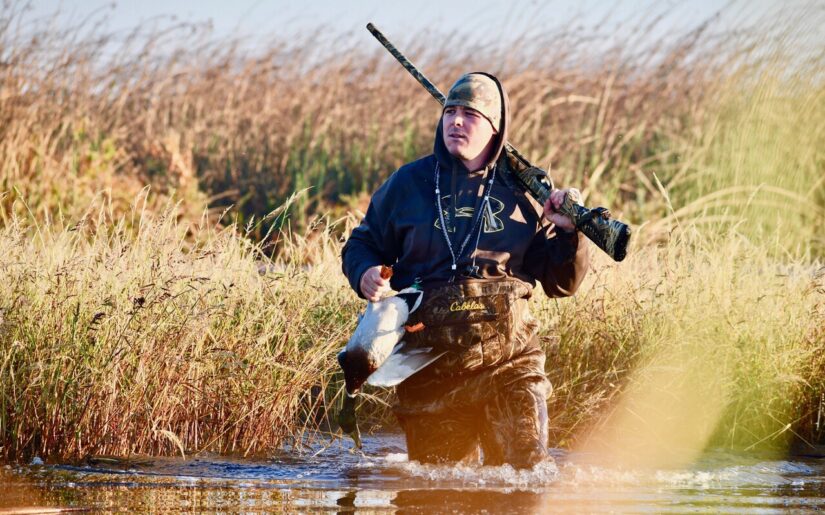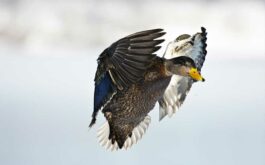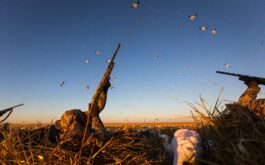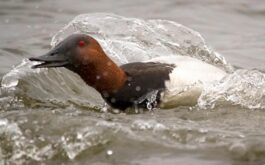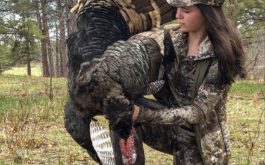Duck hunting is a true-blue favorite in the United States, for many reasons. It’s a great way to spend the day, and the country is packed with places — and species — of ducks. You can find plenty of dabblers, which feed by ducking underwater from the surface, and divers, which feed by diving deeper underwater, from coast-to-coast. We’re sharing our list of the top 20 ducks you can hunt in the US.
Dabbling Ducks:
- Wigeon: These beautiful — and tasty — ducks are vocal, widely found and are a bit of a challenge to hunt. They’re found far north, widely across the United States, and love flooded fields and tidal marshes. You’ll want to pay close attention to your hunt in areas with tight pintail bag limits, however — they can look similar.
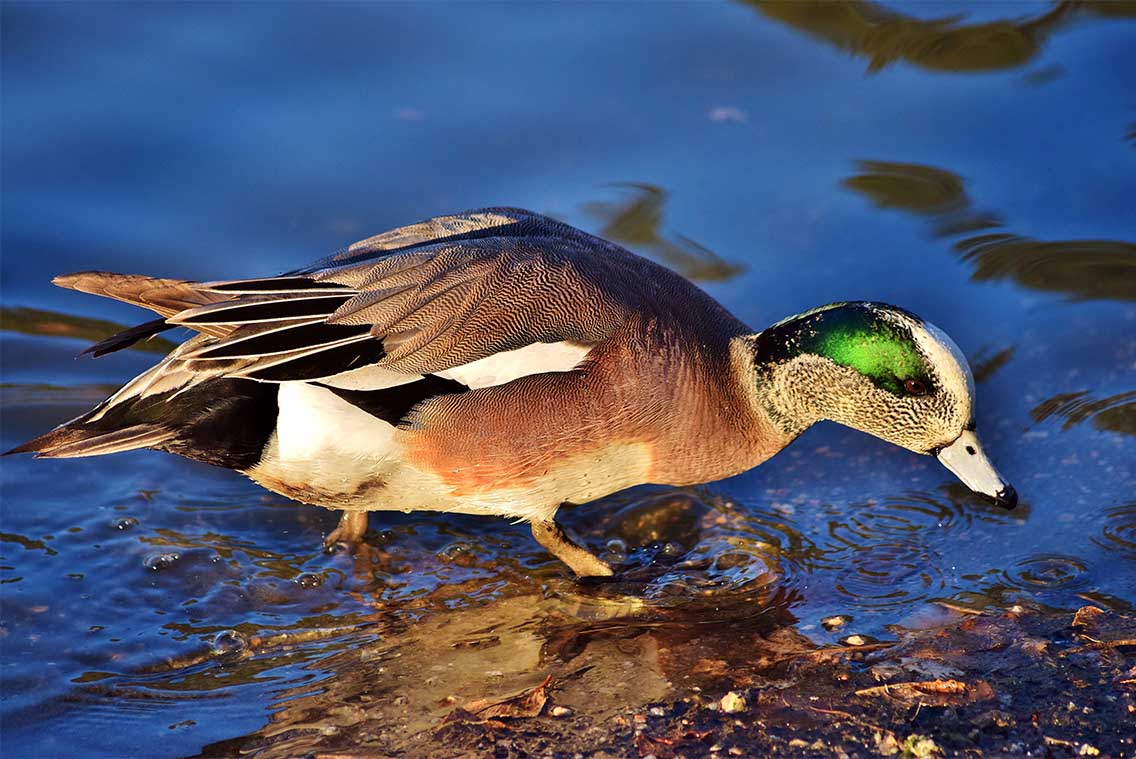
Male wigeon duck.
- Black Duck: The ultimate trophy duck, these delicious ducks aren’t easy to harvest — and are a smart, cautious breed that’s relatively tough to decoy and call. They’re found heavily in the east, like in Maine, Nova Scotia and the Atlantic Flyway, and they usually hang out in marshes and creeks that connect to larger bodies of water. Their bag limits are small due to a declining population. Learn more about hunting this elusive beauties with our guide to hunting black ducks.
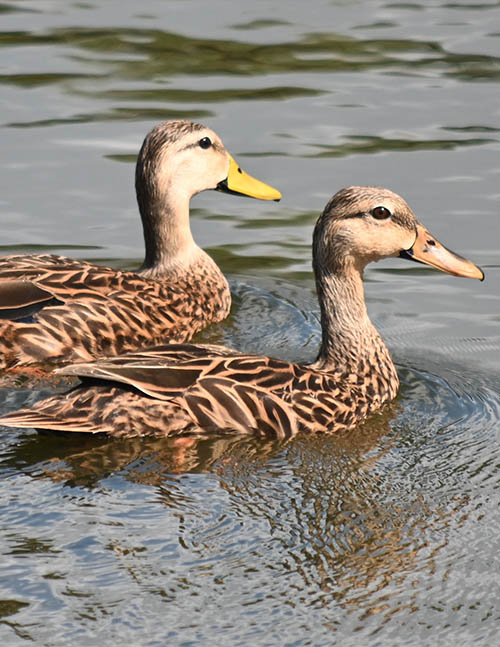
Male and female mottled duck.
- Northern Shoveler: Distinctive with their long, wide bill, these ducks are great fliers and love swimming around with their bills heavily in the water. They’re found most often in the northwest United States and Canada, and spend their time in stagnant pools and wetlands as opposed to bigger areas of water.
4. Mottled Duck: These brown, yellow-billed ducks are very similar to the Mallard duck, and tend to stick into small groups or alone. You can find them most often along the Gulf of Mexico in any freshwater area they can find.
- Muscovy: These wart-faced ducks are remarkably distinctive ducks, and are actually one of the very oldest fowl species to be domesticated. Muscovy ducks can be found most often across most of central and northern North America, and tend to stick to forest areas like those in parks.
6. Green Winged Teal: Named for its green wings, these small ducks boast deep-green patches on their wings. They’re a very common species of duck, and are found relatively everywhere across the states and Canada. They prefer shallow water.
- Blue Winged Teal: These tiny ducks are found all across North America, and are known for their ability to travel significantly far distances. They migrate early on in the year, often down to South America, and prefer shallow ponds and wetlands.
8. Northern Pintail: These beautiful ducks, which migrate at night, are known for their elegant profile and long necks. They tend to stay in groups, and love areas with shallow options, as well as near fields and in lakes. While common, their population is starting to decline.

Male and female mallard duck.
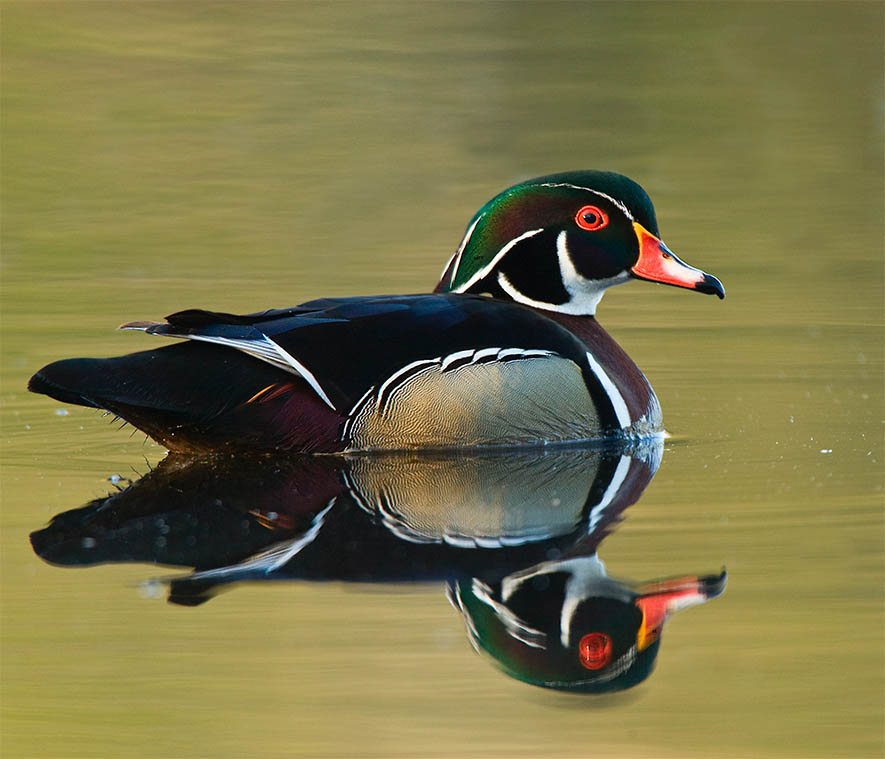
Wood duck
- Mallard: One of the most popular ducks to hunt and to eat, the Mallard duck is a quintessential duck for most every duck hunter. Their iconic green heads make them instantly recognizable, and they can be found widely across North America in lakes and ponds.
10. Gadwalls: These large, neutral ducks tend to be overlooked by accident, but they’re remarkably smart and sneaky. They enjoy deeper water than most dabbling ducks do, and you can recognize them through intricate patterns on their feathers and plumage.
11. Wood Duck: One of the most beautiful species of ducks around, the Wood Duck’s distinctive head shape and claws make them different. They tend to stick to the edges of water, and will pick their way through the landscape.
Diving Ducks
- Canvasback: This elegant duck has a distinctive, sloping head shape and their forehead makes them noticeable among other diving ducks. They are readily hunted and are therefore quite smart, and will dive away quickly. They’re usually found in open water, and are prevalent across North America. Check out our full article on hunting canvasback.
13. Redhead: Named for their red heads, these sociable ducks enjoy hanging out in groups and are susceptible to decoys. You can find them all over the states, but they are partial to grasslands as well as the shallower waters in the Great Lakes and Gulf Coast.
14. Scaup (Greater and Lesser): The Scaup ducks come in two types — Greater Scaup and Lesser Scaup. The Greater Scaup is recognizable with its rounded head, while the Lesser Scaup has a peaked hat of sorts on its head. They tend to converge in larger lakes, but they’re also partial to wetlands.
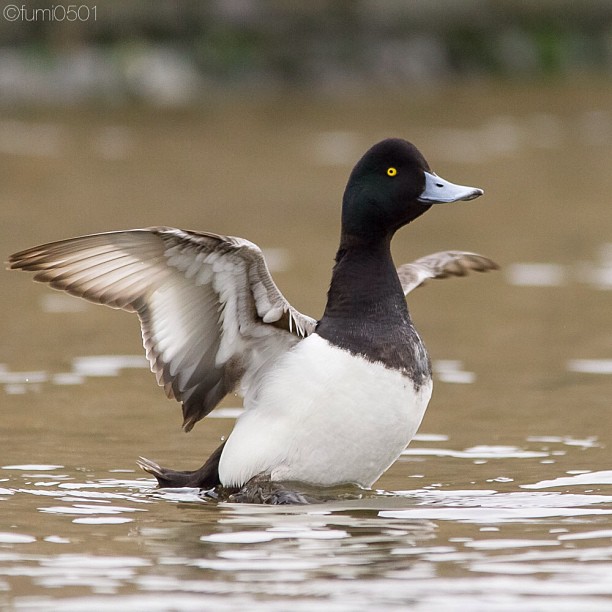
Male greater scaup.
- Bufflehead: These large-headed ducks are known for the shape of their noggins, and they also exhibit diving behavior regularly. They can typically be found in large bodies of water in the winter, and are recognizable by their bubble heads.
16. Common Eider: These large ducks enjoy rockier, marine waters, and the sea ducks have sloping foreheads that make them recognizable. You can usually find them resting during high tide, and they live in marine areas in North America
17. Common Goldeneye: Named for their striking golden eyes, these ducks are also known for their large white patches. You can find them nesting in boreal forest tree cavities in northern North America during most of the year, but you can find them in the winter in protected coastal waters or on lakes and rivers.
18. Common Merganser: These long-bodied ducks are large, and are recognizable with their straight, narrow bills. They tend to gravitate towards freshwater rivers and lakes, but occasionally can be found in saltwater estuaries as well.
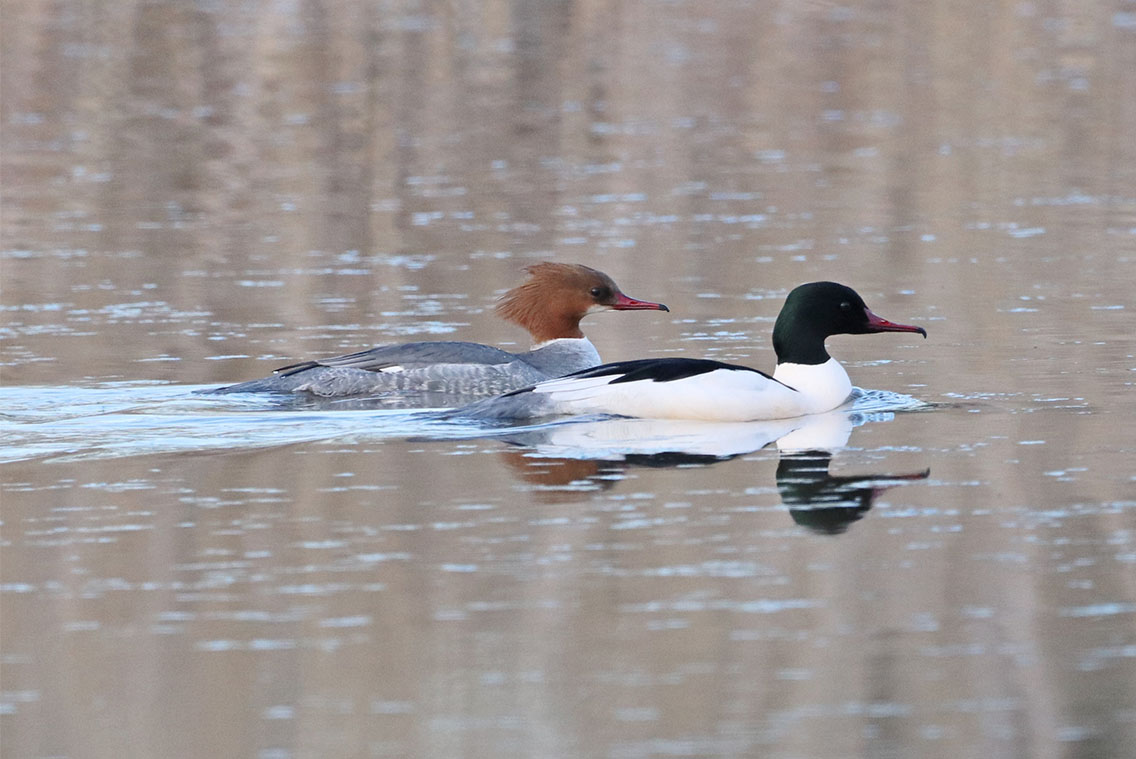
Male and female common merganser.
- Black Scoter: These gorgeous black ducks are stocky and medium-sized, and you’ll often see them diving for shellfish in shallower waters. You may also recognize them with an orange spot on their bill, and you may recognize them by whistling sounds.
- Hooded Merganser: These ducks, which are pretty small, can typically be recognized by a hooded, fan-shaped crest on top of their heads that sometimes makes their heads seem to be really oversized. You can typically find them in smaller bodies of freshwater, usually along the coast.
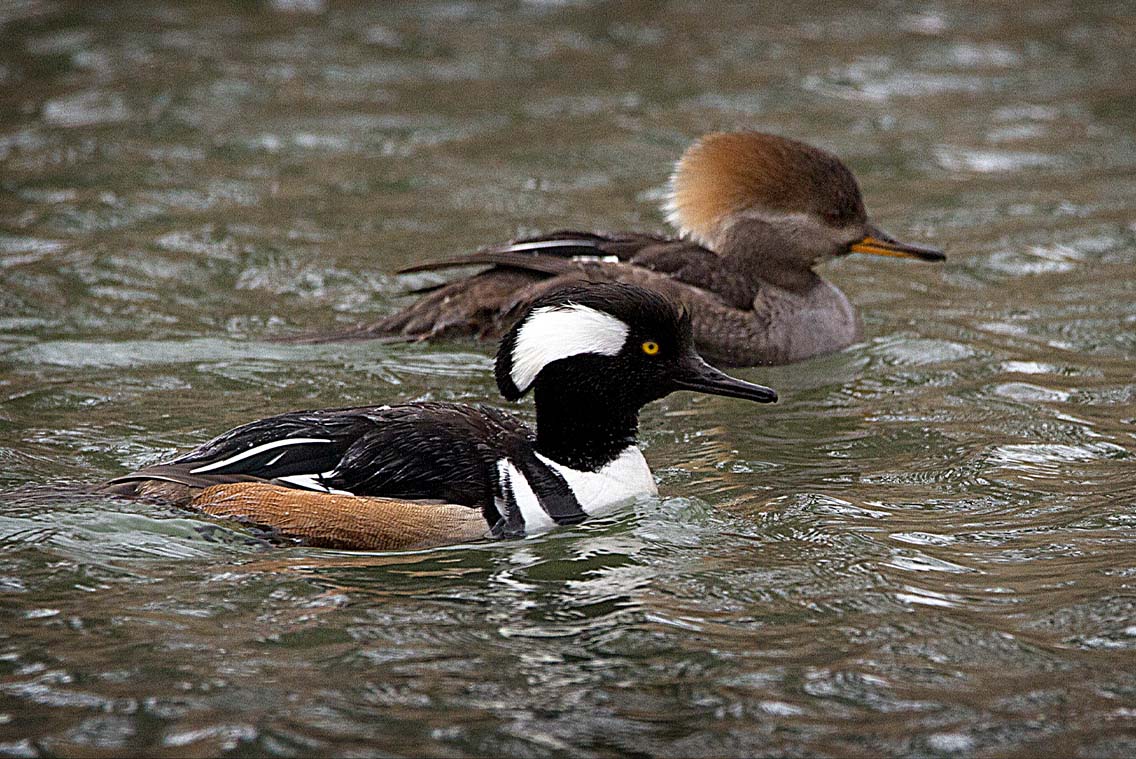
Male and female hooded merganser
—
There you have it – HUNTINGsmart!’s list of top 20 ducks you can hunt in the US. If you’re ready to start duck hunting, you’ll want to make sure you’re prepped and ready to do so safely and legally. Our narrated, animated hunting safety courses make it easy. Register here.
